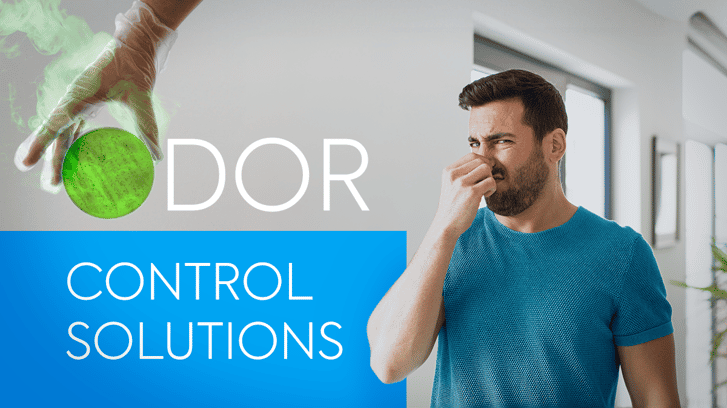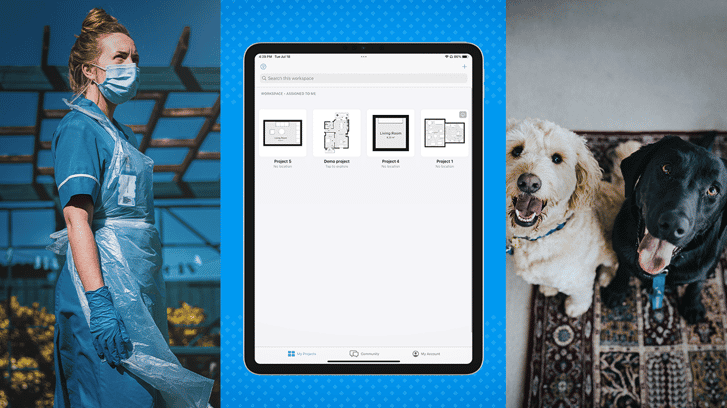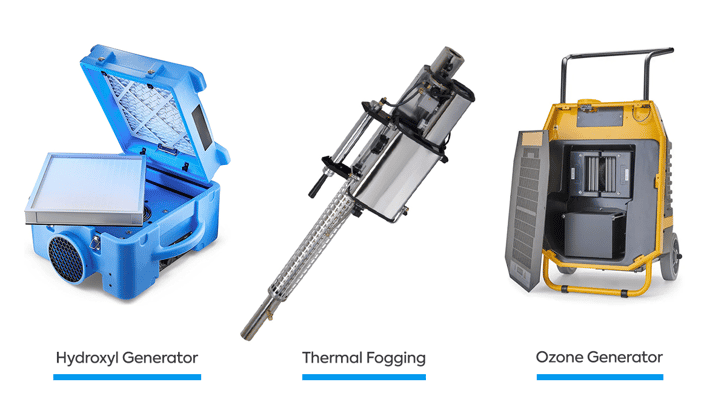Restoration
Odor Control Solutions: Tackling Persistent Smells and Contaminants

As a restoration professional, you play a crucial role in rejuvenating the physical aspects of damaged spaces. However, you may also encounter persistent, unpleasant odors during your restoration projects. In the article below, we provide guidance for addressing annoying, offensive and hazardous scents.
The Importance of Odor Control Services in Restoration Projects
Odor control is a vital aspect of any restoration project because it directly impacts the well-being of people who live and work in the spaces you are restoring. Lingering odors can cause distress, discomfort, and even health issues. Therefore, you’ll want to prioritize odor control to help protect occupants and prevent potential liability issues.
When you perform effective odor control, you will ensure a thorough and successful restoration process, which can have a positive impact on your professional reputation.
The best strategy for dealing with difficult clients in home building and restoration projects is to avoid problems in the first place. You will notice early on if someone is prone to causing issues and you can lay the groundwork for a (more) trouble-free process by getting a few things right from the start.
Types of Contaminants That Can Cause Odors
- Animal urine/waste/dander
- Bacteria/fungi
- Chemicals
- Cigarettes/cigars/pipes
- Cooking or burnt-food odors
- Decomposition
- Fire and smoke damage
- Fireplace soot
- Flood water
- Gross filth
- Hoarding piles/stashes
- Human bodily fluids/waste
- Marijuana
- Mildew
- Mold
- Rodent waste
- Sewage backup
- Spoiled food
Who Can Benefit from Odor Control
A wide range of individuals and businesses can benefit from odor control solutions in restoration projects. Homeowners who have experienced water damage, fire incidents or other disasters will greatly appreciate a clean and fresh-smelling environment. Owners of commercial properties, such as hotels, restaurants, and office buildings rely on professional odor control to maintain a comfortable atmosphere for their employees and customers. Additionally, property managers, facility managers and real estate agents also greatly benefit from effective odor control, as it can help maintain property value, eliminate potential health risks, and create a pleasant environment for tenants and buyers.
The Best Process for Odor Control
To successfully address odors in your restoration projects, you should follow a systematic approach. The following steps outline an effective odor control system:
- Inquiry: Begin by meeting with your customer and asking a series of questions to learn more about the odor problem. Does the individual have an idea as to what is causing the odor? Are there any animals on the property? Has the customer attempted any DIY odor-removal routines? Questions like these can help uncover valuable information.
- Inspection: Thoroughly inspect the property – while wearing appropriate personal protective equipment – to identify the source and extent of odor contamination. And be sure to create documentation as you move throughout the space. Using a floor plan app can be helpful for this! If you have this type of app loaded on your mobile device, you can create a sketch that maps out all contaminated areas. This is beneficial because:
- You can insert objects and annotations to record your findings, as well as make note of odor control equipment and methods you may want to use
- Then you can share your completed sketch with your customer (to communicate your planned approach) and with your team members (to coordinate work assignments).
- You can also revisit your sketch later, when work is underway, to record exactly how your team is addressing the odor control problem -- and then revisit your sketch again after all work is completed to record the final results.

- Containment: Isolate the affected area to prevent further odor spread and cross-contamination. This also helps focus your odor control efforts.
- Source Removal: Eliminate the source of the odor. This may involve techniques such as removing and/or cleaning contaminated materials, addressing moisture issues causing mold and mildew, and replacing any affected structural components (such as charred wood or wet drywall) or porous surfaces (such as moldy ceiling tiles or damp carpet) that are sources of unpleasant scents.
- Odor Removal: Remove the odor from ALL affected areas, starting with large particulate matter first, and then working down to smaller particulate matter. Even if the source is removed, that doesn’t mean the odor will go away on its own. You may still need to clean and deodorize surfaces and contents that have absorbed the lingering odor (e.g., furniture, curtains, rugs, pillows, clothing).
- Air Filtration: Use air-filtration devices equipped with high-efficiency particulate air (HEPA) filters to remove airborne contaminants and odors. This step helps improve the air quality, to return it to an acceptable state.
Effective Techniques/Tools for Odor Control
You have access to a variety of effective techniques and tools for odor remediation. These include thermal fogging, ozone generators, hydroxyl generators, activated carbon filters, and air purifiers. Thermal fogging disperses deodorizing agents in a fog form, penetrating difficult-to-reach areas and neutralizing odors. Ozone and hydroxyl generators break down and eliminate odor molecules in the air. Activated carbon filters and air purifiers are valuable tools for capturing and eliminating airborne contaminants and odors.
You also have other options at your disposal, such as air-ventilation improvements and carpet-cleaning methods, as well as activated charcoal, disinfectants, degreasers, enzyme cleaners, oxidizers, and stain and odor sealants.
Tip: Look into using EPA-approved cleaning products, which are safe for human health and the environment.
Remember: There is no one-size-fits-all approach when it comes to odor remediation. Employing a combination of state-of-the art techniques and tools, tailored to a customer’s specific odor issue, ensures optimal results.

How to Help Customers Maintain Odor Control
Consider offering high-quality air purifiers for sale to your satisfied odor-control customers. This will help them maintain better indoor air quality long after your remediation work is done.
Conclusion
Professional odor control is an essential component of many restoration projects – a way for you to create cleaner, safer, fresh-smelling environments for property owners, managers and occupants. You can ensure successful outcomes by understanding the various contaminants that can cause odors, implementing the best process, and using effective techniques and tools. So, if your business does not already offer professional odor control, consider adding it to your service offering as another way to earn more revenue!
READ MORE
9 Reasons Why Every Restoration Contractor Should Go Paperless
Indoor Air Quality Inspections: A New Revenue Stream for Your Contractor Business
Bernd Wolfram
Head of Product
